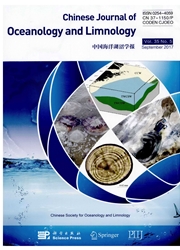

 中文摘要:
中文摘要:
许多水的有机体被暴露否定地影响到高铜集中。我们调查了贻贝 Mytilus coruscus 的生物化学的反应(Mytiloida:Mytilidae ) 到铜暴露。在用 M 的 vivo 生物鉴定。coruscus 和不同的铜集中被进行。六 biomarkers 的活动,也就是 superoxide dismutase (草皮) ,过氧化氢酶(猫) ,酸磷酸酶(ACP ) ,碱的磷酸酶(AKP ) , glutamic-oxaloacetic transaminase (得到) 并且 glutamic 焦葡萄酸 transaminase (通用终端) 被测量。幸存率与增加的铜集中和暴露时间减少了。在 48, 72,和 96 h 暴露的 LC50 价值分别地是 0.48, 0.37,和 0.32 mg/L。在消化的腺以内,猫活动与增加 Cu 集中增加了。AKP 的活动没显示出重要变化,当时留下四酶与增加 Cu 集中显示出减少的活动。在鳃以内,当 Cu 集中是 0.05 mg/L 时, AKP 活动增加了,但是没在更高的集中显示出重要变化。在鳃以内的猫和 ACP 的活动趋于与增加 Cu 集中减少。草皮和通用终端的活动在 0.2 mg/L 的暴露集中减少了。在鳃以内的得到的活动在 0.1 mg/L 减少了并且在 0.2 mg/L 的暴露集中增加了。在内转肌肌肉以内, AKP 活动在 0.05 mg/L 增加了但是没在更高的暴露集中变化。,在内转肌肌肉织物以内的 ACP 活动没显示出变化猫的活动,与增加 Cu 集中得到了,通用终端减少了。在内转肌肌肉组织以内的草皮活动显著地在 0.02, 0.05 和 0.2 mg/L 暴露集中减少了。我们的结果显示出织物为六 biomarkers 在的特定的差别为 M。coruscus。我们的调查结果提供基础因为参考活动的建立对对哪个 biomarker,变化能被估计铺平,并且是在开发的必要的初步的步在 vivo 生物鉴定。
 英文摘要:
英文摘要:
Many aquatic organisms are negatively affected by exposure to high copper concentrations. We investigated the biochemical response of the mussel Mytilus coruscus (Mytiloida: Mytilidae) to copper exposure. In vivo bioassays using M. coruscus and different copper concentrations were conducted. The activity of six biomarkers, namely superoxide dismutase (SOD), catalase (CAT), acid phosphatase (ACP), alkaline phosphatase (AKP), glutamic-oxaloacetic transaminase (GOT) and glutamic-pyruvic transaminase (GPT) were measured. Survival rates decreased with increased copper concentrations and exposure times. The LCs0 values at 48, 72, and 96 h exposure were 0.48, 0.37, and 0.32 rag/L, respectively. Within digestive glands, CAT activity increased with increasing Cu concentrations. The activity of AKP showed no significant change, while the remaining four enzymes showed decreasing activity with increasing Cu concentrations. Within the gills, AKP activity increased when the Cu concentration was 0.05 mg/L, but showed no significant changes at higher concentrations. Activity of CAT and ACP within gills tended to decrease with increasing Cu concentration. The activity of SOD and GPT decreased at an exposure concentration of 0.2 mg/L. GOT activity within gills decreased at 0.1 mg/L and increased at an exposure concentration of 0.2 mg/L. Within the adductor muscle, AKP activity increased at 0.05 mg/L but did not change at higher exposure concentrations. ACP activity within adductor muscle tissue showed no change, while activities of CAT, GOT and GPT decreased with increasing Cu concentrations. SOD activity within the adductor muscle tissue significantly decreased at the 0.02, 0.05 and 0.2 mg/L exposure concentrations. Our results show tissue specific differences for the six biomarkers in for M. coruscus. Our findings provide the basis for the establishment of reference activity levels against which biomarker changes can be estimated, and are essential preliminary steps in development of in vivo bioassa
 同期刊论文项目
同期刊论文项目
 同项目期刊论文
同项目期刊论文
 Effects of neuroactive compounds, ions and organic solvents on larval metamorphosis of the mussel My
Effects of neuroactive compounds, ions and organic solvents on larval metamorphosis of the mussel My 期刊信息
期刊信息
